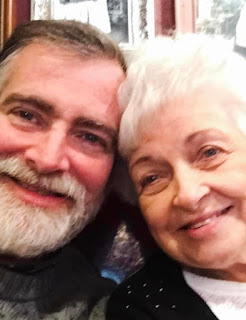Four enduring stories may help our gift-giving anxiety this season
GIFT ANXIETY What shall I give? Will it be enough? Will it be right? Will it be what my dear ones desire? Will they be pleased? Such thoughts rattle through my mind as I think about gift-giving. I scroll through online items and walk the aisles of stores with questions circling. You do this, too? We are not alone.
Some of my favorite imaginative Christmas stories and songs revolve around gift anxiety--and its resolution. Leaving alone the more perplexing story woven in the Twelve Days of Christmas song, you may know the following stories quite well. I recall them here and set them in context of this question: what is an adequate gift?
LITTLE DRUMMER The most popular of the stories I have in mind is embedded in the song, "The Little Drummer Boy." It sings first-person of a little boy who has nothing he thinks is fit to bring to the baby who is born to be the King. "I have no gift to bring," he sighs. He decides—innocently, naively, hopefully—to offer the only thing he has or can do: he will play his drum the very best he can for Jesus. In the song, the baby Jesus smiles at him as he plays. The gift is adequate.
LITTLEST ANGEL "The Littlest Angel" is a beloved childhood story about a troublesome little angel who, learning that God's Son is to be born on earth, manages to gather together such common things as a butterfly, a bird’s egg, stones, his favorite dog’s collar in a rough-hewn box--things that he loved as a little boy on earth—to offer the Christ child. However, when the glorious light shines on all the other angels’ gift items, the littlest angel’s earthy gift pales grossly in comparison to their magnificent, shining gifts. He feels humiliated and runs to hide. But, to his surprise, his simple choices are things the little boy Jesus relates to and loves. As the Christ child looks approvingly upon his gift, it rises and transforms to become the star above the stable, giving light to all.
GIFT OF THE OF MAGI "The Gift of the Magi" by O. Henry is the touching story of a young couple with very limited resources trying to offer each other a significant gift at Christmas. Unbeknown to each other, they sacrifice the best they have for the other's best. She sells her beautiful long hair so she can purchase a golden chain for her lover's valuable watch. He pawns his cherished timepiece to buy a golden comb for her beautiful hair.
IN THE BLEAK MIDWINTER Christina Rossetti’s carol "In the Bleak Midwinter" concludes with a verse that compellingly underscores the only adequate gift we really bring is the gift of our heart:
“What can I give Him, Poor as I am?
If I were a shepherd, I would bring a lamb.
If I were a wise man, I would do my part.
Yet what I can I give Him--Give my heart.”
GIFTS WE RECEIVE Christmas is really not about what we may give to Jesus or to others. It is about what Grace has given to us. All our gift giving is a simply response to and reflection of this gift. Whatever it is you choose to give to others, let it be joyfully and from a grace-gifted heart.






